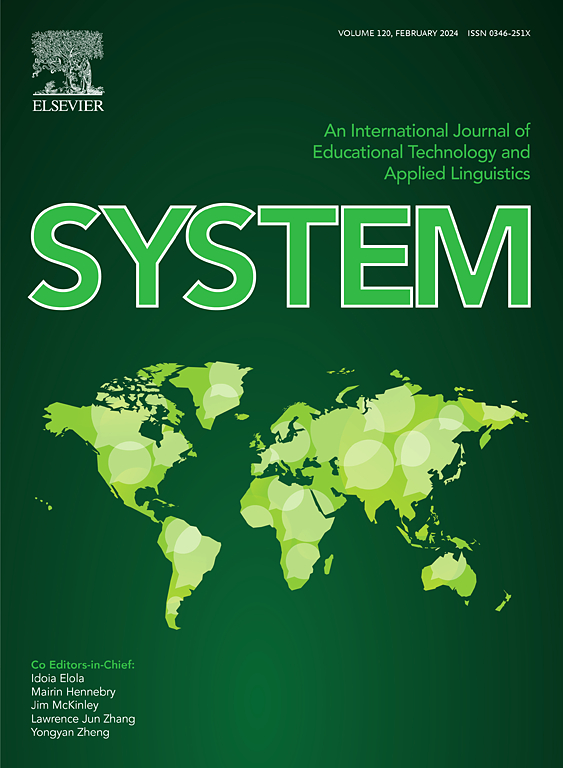二语写作中词汇和句法复杂性的动态关系研究:一项基于cdst的研究
IF 5.6
1区 文学
Q1 EDUCATION & EDUCATIONAL RESEARCH
引用次数: 0
摘要
本研究探讨了中国 EFL 学习者在五个水平级别(ST2-ST6)的 L2 写作中词汇和句法复杂性的发展。通过分析《中国英语学习者语料库》(2003)中的 3423 篇文章,我们分别采用了移动平均类型-标记比和平均依存距离来测量词法和句法的复杂性。结果表明,这两种测量方法在不同水平的学生中都有明显的非线性增长。句法复杂性呈现持续增长,而词汇复杂性则在中等水平时趋于稳定。动态关系分析表明,词法和句法复杂性之间存在补偿增长期,尤其是在较低水平时。综合的复杂性测量结果显示了整体的线性趋势,但也有显著的非线性成分。从复杂动态系统理论的角度来解释这些研究结果,表明 L2 写作的发展涉及不同语言能力水平之间错综复杂的、有时是竞争性的相互作用。这项研究的成果对语言教学法,尤其是对制定适合不同阶段的教学策略和多维度评估实践具有重要意义。本文章由计算机程序翻译,如有差异,请以英文原文为准。
Investigating the dynamic relationship of lexical and syntactic complexity in L2 writing across proficiency levels: A CDST-inspired study
This study examines the development of lexical and syntactic complexity in L2 writing across five proficiency levels (ST2-ST6) of Chinese EFL learners. Analyzing 3423 essays from the Chinese Learner English Corpus (2003), we employed the Moving-Average Type-Token Ratio and Mean Dependency Distance to measure lexical and syntactic complexity, respectively. Results revealed significant, though non-linear, increase in both measures across proficiency levels. Syntactic complexity showed consistent growth, while lexical complexity plateaued at intermediate levels. A dynamic relationship analysis indicated periods of compensatory growth between lexical and syntactic complexity, particularly at lower proficiency levels. A combined complexity measure demonstrated an overall linear trend with significant non-linear components. These findings, interpreted through the lens of Complex Dynamic Systems Theory, suggest that L2 writing development involves intricate, sometimes competitive interactions between different levels of language proficiency. The study's outcomes have implications for language pedagogy, particularly in informing stage-appropriate instructional strategies and multi-dimensional assessment practices.
求助全文
通过发布文献求助,成功后即可免费获取论文全文。
去求助
来源期刊

System
Multiple-
CiteScore
8.80
自引率
8.30%
发文量
202
审稿时长
64 days
期刊介绍:
This international journal is devoted to the applications of educational technology and applied linguistics to problems of foreign language teaching and learning. Attention is paid to all languages and to problems associated with the study and teaching of English as a second or foreign language. The journal serves as a vehicle of expression for colleagues in developing countries. System prefers its contributors to provide articles which have a sound theoretical base with a visible practical application which can be generalized. The review section may take up works of a more theoretical nature to broaden the background.
 求助内容:
求助内容: 应助结果提醒方式:
应助结果提醒方式:


